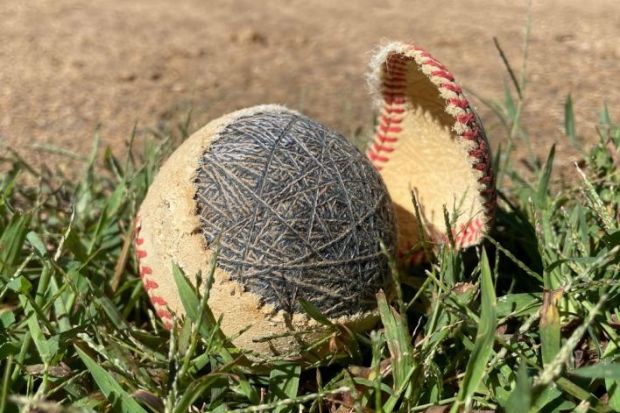US colleges and universities are now openly considering the idea of paying salaries to their student-athletes, saying the step they had long resisted now appears to be a forward-looking element of intercollegiate sports.
The NCAA, which represents more than 1,000 colleges and universities, set out the idea in a request from its president, Charlie Baker, for institutions to help shape the details.
The move suggests a potentially major leap for the NCAA after its slow acceptance of political and legal demands that it stop giving institutions billions of dollars in revenue and coaches millions of dollars in salaries while offering its top-tier athletes – typically black men – little more than scholarships for academic programmes of often-disputed value.
“Colleges and universities need to be more flexible, and the NCAA needs to be more flexible, too,” Mr Baker, a former Republican governor of Massachusetts now in his first year heading the NCAA, said in outlining the plan.
The NCAA plan proposes no ceiling on athlete pay, although it suggests a minimum investment of at least $30,000 (£24,000) per student for at least half of the eligible athletes at institutions that choose to participate. In line with federal law, institutions also would need to “abide by existing gender equity regulations as they make investments in their athletics programmes”, the NCAA said.
“It gives the educational institutions with the most visibility, the most financial resources, and the biggest brands, an opportunity to choose to operate with a different set of rules that more accurately reflect their scale and their operating model,” the NCAA said in its proposal.
The NCAA has been under growing pressure from athletes and their advocates for more than a decade, dating back to University of California, Los Angeles basketball player Ed O’Bannon’s successful lawsuit seeking the freedom to profit from his own advertising endorsements. After some extended legal and political wrangling over the issue, the NCAA formally affirmed that right in 2019.
The pressures have nevertheless continued, as coaches in the top-revenue college sports – men’s football and basketball – have routinely stood out as the highest-paid public employees in many states. Football players at Northwestern University tried to form an employee union in 2014, and basketball players at Dartmouth College are attempting to do the same now.
But paying actual salaries seems an overreaction to the fairly limited demand among student-athletes for that extreme a move, said a leading expert in college sports, Andrew Zimbalist, a professor of economics at Smith College.
Despite the billions of dollars in revenue generated by college sports, Professor Zimbalist said, most institutions run their programmes at a deficit – an average annual loss of $20 million at the most competitive colleges and universities. Paying large salaries to athletes would only widen those deficits, hurting other students as institutions cut their budgets elsewhere, he said.
The more pressing needs among student-athletes, Professor Zimbalist said, include better medical care and better educational opportunities. Only about 1 per cent of college sports revenue goes to athlete health, along with 14 per cent spent on scholarships, compared with professional team sports, where about 50 per cent of the revenue goes to athlete needs, he said.
And competitive sports schedules currently make it nearly impossible for student-athletes in the higher-value sports of football and basketball to major in fields such as medicine, chemistry or biology, Professor Zimbalist said. Revenues from sports could be used to build new lab facilities and hire additional instructors so that student-athletes can “get a robust education and get to choose the majors that they’re intellectually or vocationally interested in”, he said.
Another expert, Tyler Ransom, an associate professor of economics at the University of Oklahoma, said he was more open to the NCAA’s plan but thought a number of details still needed to be worked out, including questions of how much revenue from the most profitable sports would be shared with students in all the other sports.
US universities seem determined to solve those kinds of payment questions, given the large advertising value of college sports, Professor Ransom said. “I don’t think sports are ever leaving US higher education,” he said.
Professor Zimbalist has a similar bottom-line expectation of the NCAA finding a resolution that maintains the college-sports relationship, albeit with less confidence in the underlying equity. A fair solution, given the racial differences between the profit-generating student-athletes and most coaches, would start with greatly reducing coaching salaries, he said.
Instead, however, that pay inequity appears to help explain why the NCAA is pushing for student-athlete salaries even when the students overall do not seem to be demanding it, Professor Zimbalist said. “They want to keep the system going as it is,” he said of the mostly white ranks of coaches and administrators, “and they’re willing to make compromises in order to keep the system.”
Register to continue
Why register?
- Registration is free and only takes a moment
- Once registered, you can read 3 articles a month
- Sign up for our newsletter
Subscribe
Or subscribe for unlimited access to:
- Unlimited access to news, views, insights & reviews
- Digital editions
- Digital access to THE’s university and college rankings analysis
Already registered or a current subscriber? Login







